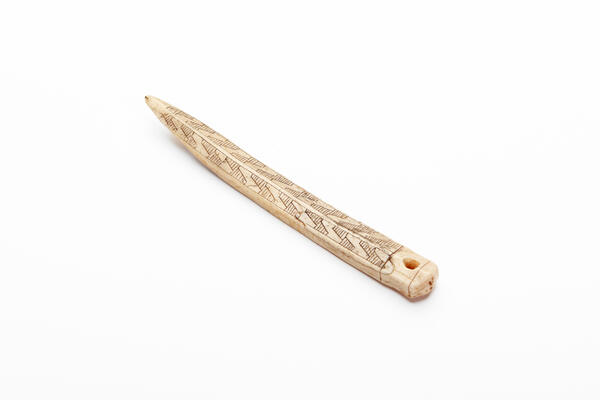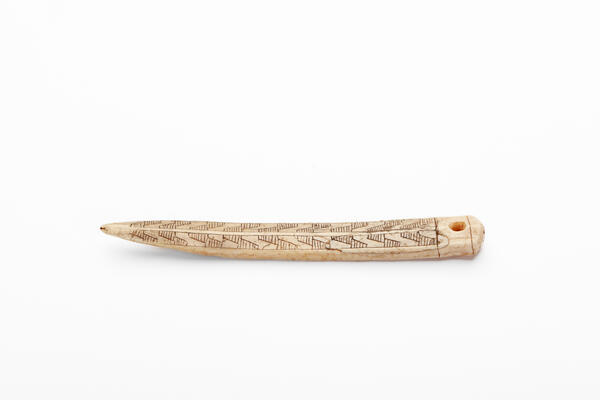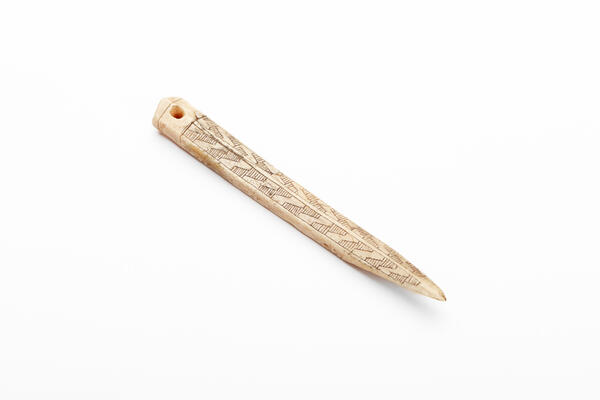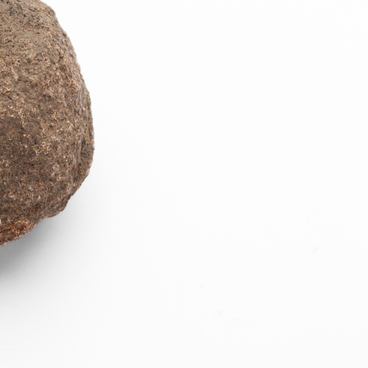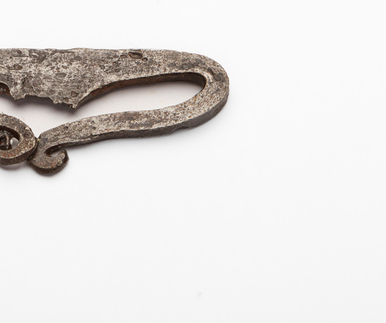A kochedyk is a tool for weaving from birch bark and bast. It is shaped like an awl or a curved flat claw. A kochedyk was used to widen the gap between the fibers in order to pass a new loop through it. Kochedyks were used for weaving bast shoes, baskets, nets and mats and also to remove bast from tree trunks.
The kochedyk is one of the oldest and most widespread tools. It appeared in the Stone Age; at various times, it was made from wood, animal ribs and metal. Kochedyks could be with or without an additional handle, and the iron products were used as a fire striker.
There are many superstitions, proverbs and idioms associated with kochedyks. There are also many Russian sayings and riddles, like “Don’t rush with your tongue, hurry with your kochedyk”.
In the 19th century, the ethnographer Grigory Yegorovich Vereshchagin wrote down an Udmurt folk tale: “In the olden days, Nyulesbeche constantly took old people to the forests and told them: ‘Don’t go anywhere without a kochedyk, especially into the forest: if someone goes into the forest without one, I will knock all their teeth out.’ Since then, the Votyaks [that is, Udmurts] began to carry kochedyks with them. Nyulesbeche had a huge kochedyk.”
All kochedyks found during excavations at the Idnakar hillfort in Soldyr were made from animal tubular bones, teeth and ribs. They differ by their design of the top, the degree of curvature and sharpness of the working tip, as well as by the ratio of length and width.
Each master carved the tool according to their own preferences and taste while still observing general traditions. Over 600 kochedyks were found in Idnakar, and they are all different: some have a more thought-out design, while others are more schematic; some are polished to a shine, while others were simply smoothed by hand; some feature a subtle pattern, while others are not decorated at all.
The design of bone kochedyks from the Idnakar hillfort is varied. The geometric design is represented by flags, cross hatching, triangles, dots and circles. Depending on the technique, the patterns on kochedyks can be divided into sawn, traced and stamped. Сhepetsk carved bone products, including kochedyks, are distinct for their diagonal geometric pattern.
The kochedyk from the museum’s collection has a flattened and pointed tip. It also has a figured top and a hanging hole. The kochedyk is decorated with geometric patterns. It was made from dentin of an animal tooth and was found on the territory of the Idnakar hillfort in 1990.

